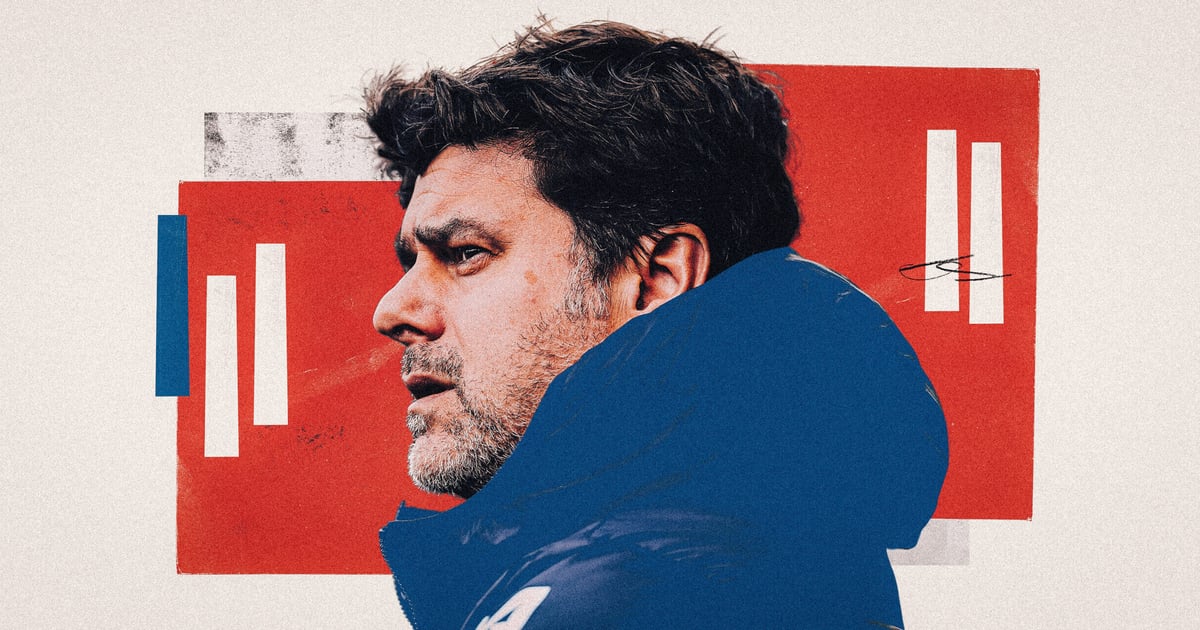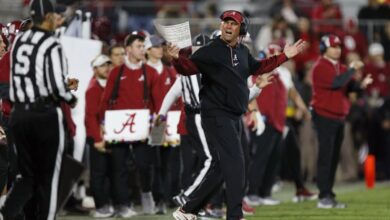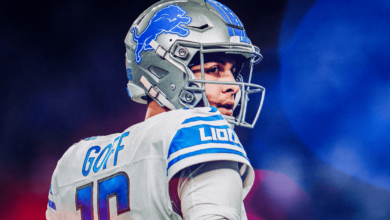Inside Mauricio Pochettino’s USMNT deal: Hayes’ role, Chelsea delays and Argentine steak

U.S. Soccer sporting director Matt Crocker looked down at his phone as he stood in his home gym in Southampton, England, and saw the message from Mauricio Pochettino.
Several days earlier, the U.S. had failed to progress from the group at Copa America under Gregg Berhalter. A “comprehensive review” was underway and every option was being evaluated. A list of potential coaching candidates was put together and Pochettino, the former Southampton, Tottenham Hotspur, Paris Saint-Germain and Chelsea manager, was at the top.
Pochettino and Crocker had crossed paths for one year at Southampton before the Argentine moved to Spurs in 2014 but the two hadn’t spoken in some time. Crocker reached out to a mutual friend at Southampton to ask if he had a current number for the 52-year-old, then sent him a message. Would he be interested in a chat?

GO DEEPER
Mauricio Pochettino appointed USMNT head coach
When the message from Pochettino came back, Crocker picked up the phone to call immediately.
For 20 minutes, as Crocker stood in his home gym, the two former colleagues caught up on their families, careers and where life had taken them since they last worked together. Then, Crocker asked if Pochettino would be willing to meet in person in Barcelona, where the former Espanyol player and manager lives. He had a project he thought would be interesting, even if it would be Pochettino’s first foray into international soccer. Pochettino agreed to see him.

Matt Crocker was already close to Mauricio Pochettino (Candice Ward/Getty Images)
On July 16, two days after the Copa America final, Crocker, U.S. Soccer chief executive officer JT Batson and vice-president of sporting operations Elaine Lemos boarded planes to Barcelona. There, in a conference room attached to a hotel suite, the federation executives sat down with Pochettino and his longtime assistant Jesus Perez. They gifted a bottle of wine to Pochettino, who is known for loving his reds, and then got straight down to business.
Crocker and Batson laid out the project, the good and the bad. They went over the failure at Copa America and the USMNT’s results over the previous year. They detailed the plan for the 2026 World Cup, to be played largely on home soil. They went through a player pool which some see as a golden generation, but also highlighted the struggles some of them were going through in terms of regular minutes at their respective clubs. They didn’t want to shine everything up to look perfect.

GO DEEPER
This USMNT isn’t a ‘golden generation’ – the data shows it lacks top-end talent
Soon, Pochettino and Perez had a laptop out to go over their own plans and ideas. Pochettino was attracted to the idea of coaching at a World Cup, and of leading one of the 2026 version’s three host countries — especially the United States, a young team with the potential to make noise at a home tournament.
A meeting that was supposed to last 90 minutes stretched to two hours, then three, then four. At one point, Batson had to step into an adjacent room to attend another USSF meeting.
When the sitdown with Pochettino ended, both camps walked away with a positive feeling. But Crocker and Batson knew there was still lots of work to do. The search for a new coach would take the U.S. Soccer officials through almost a dozen trips around Europe, to five different countries and into conversations with several high-profile candidates. But it was that first meeting in Barcelona that set them on a path to the next era of the U.S. men’s national team.
The journey to that potentially program-changing moment, recounted to The Athletic by several people familiar with the discussions who will remain anonymous to protect relationships, was both a whirlwind and an excruciating waiting game.
The list of candidates sparkled with big names.
Pochettino. Jurgen Klopp. Pep Guardiola. Gareth Southgate. Graham Potter. Thomas Frank.
When Crocker sat down with Sam Gregory, the director of analytics for U.S. Soccer, to craft an idea of what might come next for the U.S. men’s program, it started with one major data point: winning. Crocker wanted a coach who had a reputation for winning across several environments. That list, obviously, yielded some big names. Many already had high-profile jobs. Others were available.
Deep dives were done on each coach, no matter how famous, laying out their style of play at different teams and the systems they prefer. In the end, it yielded a starting point for the coaching search. The U.S. wanted to be ambitious. They were going to shoot for even the biggest names on the list.
As Crocker picked up the phone and began making calls, the responses were overwhelmingly positive. The U.S. expected some polite ‘no, thank yous’ but heard ‘yes’ a lot more often. Meetings were set up with around half a dozen candidates. A plan was crafted.
Crocker, Batson and other U.S. Soccer officials had sat in a conference room at the Westin Jersey City hotel ahead of a U.S. women’s national team Olympic send-off game against Mexico at the nearby Red Bull Arena on July 13 and looked over the itinerary for the next week in Europe. The trip was extensive, but the names on the list created genuine excitement.
The journey didn’t always go as planned. Batson’s flight from Berlin after the men’s European Championship final later that week had to return to the airport due to smoke in the cabin, causing him to miss a meeting. On another trip, U.S. Soccer officials’ cab was pulled over by local authorities and then another taxi was held up by a protest blocking the roads, meaning the officials had to complete the journey on foot, luggage in tow, to make a meeting on time. There were multiple meetings with Klopp, who needed a break from the game having left Liverpool in May after more than eight years at the Premier League club.

U.S. Soccer officials met with Klopp multiple times (Clive Brunskill/Getty Images)
Talks with Pochettino continued to move along smoothly. Four days after their first meeting, U.S. Soccer officials returned to Barcelona to talk again with Pochettino and Perez. Whereas U.S. Soccer led the first conversation, the second was led by the two coaches. Pochettino laid out what his plans would look like for his first few months in charge of the national team.
U.S. women’s national team coach Emma Hayes was also involved. Hayes and Pochettino became friends at Chelsea, when she was in charge of the women’s side last season as he led the men’s team, and Hayes called Pochettino to lobby and tell him about her experiences with U.S. Soccer. She also served as a reference for him, advocating for U.S. Soccer to prioritize her former colleague.
Hayes was involved enough that, on the day of her team’s Olympic semifinal in Lyon, France, she checked in with U.S. Soccer officials at the squad hotel to see how things were advancing with Pochettino.
Between that semifinal win against Germany on August 6 and the gold medal game in Paris against Brazil four days later, Crocker, Batson and U.S. Soccer president Cindy Parlow Cone took another trip to Barcelona. Parlow Cone, like Hayes, was a strong advocate pushing for Pochettino. Over Argentine steak at a hotel restaurant, Pochettino pointed out his respect for Parlow Cone as the only World Cup winner in the room.
At the USWNT’s gold medal celebration party at the Nike Athlete House in Paris, Crocker and Batson took a moment in one corner of the festivities to discuss next steps. There was still plenty to be done.
From the moment U.S. Soccer decided to move on from Berhalter, Crocker was insistent that the federation would not be limited by financial constraints.
“It’s a really competitive market out there, salary-wise, and we have to be competitive to get the level of coach that I believe can take the program forward in terms of achieving the results that we want on the field,” Crocker told a small group of reporters on a Zoom call on July 10.
Berhalter made north of $2 million (£1.53m at current rates), including bonuses, in 2022. Hayes is being paid $1.6m, matching Berhalter’s base salary. To get Pochettino, who has been one of the world’s highest-paid coaches at some of the world’s biggest clubs, U.S. Soccer knew it would have to be on the higher end of national team compensation. How it would do that included some creative solutions.

Gregg Berhalter was paid significantly less than Pochettino will get (Michael Reaves/Getty Images)
As a 501(c)3 nonprofit organization, U.S. Soccer increased its efforts in fundraising over the last decade. That included efforts to reach higher-wealth individuals who might be able to help with efforts to donate toward the federation’s efforts to grow the game.
As the men’s managerial search got underway, a donor to U.S. Soccer reached out to billionaire Ken Griffin, who has given more than $2 billion to charity and has established a civic engagement initiative called Griffin Catalyst for his personal philanthropic and community impact initiatives.
Griffin has long had a connection to the sport. He played soccer growing up, his children did the same and in 2022 he joined the Ricketts family in a bid for Chelsea. Notably, Griffin has also financially supported American soccer initiatives, including donating $8 million in recent years to the U.S. Soccer Foundation to build 50 mini-pitches in Chicago and another 50 in the Miami-Dade area.
The donor connected Griffin to U.S. Soccer, and Griffin agreed to donate a substantial amount toward the men’s national team program and the hire of a new coach.
“Soccer is one of the most popular sports in America,” Griffin said in a statement. “I am excited to join my fellow Americans in supporting our teams’ efforts to triumph in the upcoming World Cup and beyond. When our players do well on the pitch, it expands the reach of this great sport. These athletes also have a powerful opportunity to be influential role models for millions of American children by exemplifying the values of teamwork, dedication, and perseverance.”
But finding the money to pay Pochettino was not the only issue. The coach was still under contract with Chelsea, despite agreeing to part ways with the London club at the end of the 2023-24 season. He was owed a substantial amount of money, but the agreement stipulated that if he took another job, Chelsea no longer owed him anything. Pochettino’s departure terms also included a six-month prohibition from taking another leading job with one of Chelsea’s major Premier League rivals.

GO DEEPER
Why Pochettino and Chelsea parted ways: ‘Loneliness’, injuries and resistance to club structure
While U.S. Soccer’s salary was competitive on the national-team scale, it fell well short of the wage paid by one of the sport’s biggest clubs. Pochettino, then, would stand to lose money by agreeing to coach the United States team.
Batson became the key middleman in the negotiation around that separation agreement. The idea was that Chelsea would pay what they owed minus the salary U.S. Soccer would pay Pochettino. In theory, everyone would be happy: the coach would receive the full compensation he was due, Chelsea would save several million dollars and U.S. Soccer would land their coach.
The U.S. federation had a good relationship with the English club — which has American co-owners in private equity firm Clearlake Capital and Todd Boehly — after already dealing with Chelsea in its hiring of Hayes last year as the women’s national team coach.

Emma Hayes was an advocate for Pochettino (Patricia De Brad Smith/USSF via Getty Images)
But discussions dragged out for weeks over Pochettino.
With the Premier League’s summer transfer window still open, Chelsea had to focus on getting business done and that delayed substantive talks. Pochettino was also focused on helping his footballer son Maurizio land a new club; the 23-year-old would end up signing with CD Ibiza in Spain’s fourth division. The talks were always constructive, but they were also complicated.
Behind the scenes in the States, those waiting for word that the deal was done saw a finish line that kept moving. Preparations were made for an announcement on more than one occasion. The initial hope was to get Pochettino in time for the team’s September camp, but that didn’t happen. Then, the goal was to make an announcement in time for him to meet the players in Kansas City around the game there against Canada last week. Perhaps it was better he wasn’t there in person to see a listless performance against Canada, one that underlined just how badly this team is in search of inspiration.
Amid the delays, there was fresh tension over the futures of Eddie Howe at Newcastle United and Erik ten Hag at Manchester United. Pochettino was among the coaches discussed by Manchester United in the summer and also has pre-existing relationships with Newcastle sporting director Paul Mitchell and performance director James Bunce. But he resisted any temptation to hold out for a potential return to the Premier League this fall.
The Athletic has every angle covered on Mauricio Pochettino’s appointment as USMNT head coach:
With the fate of the deal in the hands of lawyers, and Batson continuing to broker things to try to get it over the line, an agreement was finally finished.
The deal protects U.S. Soccer against any risk of poaching from a European club in the two years before the World Cup — there is a material buyout in the contract — and both sides feel the partnership is solidly set through 2026.
Pochettino is going into the job with eyes wide open and with real intent regarding what he can do. After stops at clubs where there were different levels of instability and power dynamics, he felt confident in his ability to lead and make an impact at U.S. Soccer; not just with the men’s national team but even beyond that into the coaching and game models throughout the federation.
A message from Mauricio 🇺🇸
🗣️ ENG ➡️ 🗣️ ESP
— U.S. Soccer Men’s National Team (@USMNT) September 10, 2024
On Sunday, at 6:30 p.m. EST, the U.S. Soccer board met for a vote. The deal with Pochettino passed and on Tuesday evening, 30 minutes before the USMNT’s friendly against New Zealand kicked off, U.S. Soccer made the long-awaited announcement.
Pochettino will be unveiled later this week, and the hope is that he can be for the U.S. men what Hayes has been for the U.S. women, a coach who can be a spark for a team that badly needs one. Pochettino’s task will be different; the women have been champions and were trying to reach that peak again. This men’s team must learn how to win big games and live up to their building hype instead of crumbling. But if Pochettino can have the impact Hayes did, the hire has a chance to be a transformative one for U.S. Soccer.
The search started with the ambition to find a winner. The U.S. landed one in Pochettino. Now they hope that winning carries on with the U.S. crest.
(Top photo: Getty Images; Design: Eamonn Dalton)




